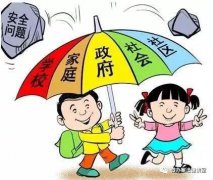翻译
Lecture TwoPrinciples of / Criteria for Translation; Process of Translation
Instructor: Wu Hui
翻译
Objectives:This lecture is designed for students to
get familiar with translation criteria
obtain a clear idea about theprocess of translation
翻译
Principles of / Criteria for TranslationThe so-called principles of/ criteria for translation are actually the two sides of the same thing, from different angles.The former lays emphasis on the translator, while the latter on the reader or critic, who may use the criteria to evaluate translation works.
翻译
Various ideas on criteria for translation
I. Some views by Western scholars
II. The most popular and accepted views by some Chinese scholars III. Commonly Accepted Criteria for translation
翻译
Some views by Western scholars:
George Campbell (乔治· 坎贝尔) Alexander Fraser Tytler (泰特勒) 的三原则 Eugene A. Nida (奈达) 的对等 (equivalence)
翻译
Criteria for translation were first proposed by English Scholar and translator George Campbell in 1789: The first thing … is to give a just representation of the sense of the original 首先,准确地再现原作的意思 The second thing is, to convey into his version, as much as possible, in a consistency with the genius of the language which he writes, the author’s spirit and manner 第二,在符合译作语言特征的前提下,尽可能地移 植作者的精神和风格 The third and last thing is, to take care, the version have at least, so far the quality of an original performance, as to appear natural and easy 第三,也是最后,使译作至少 具有原创作品的特性,显得自然流畅
翻译
---- Alexander Fraser Tytler(泰特勒) 1) A translation should give a complete transcript of the ideas of the original work, 2) The style and manner of writing should be of the same character as that of the original, and 3) A translation should have all the ease of the original composition.
翻译
Eugene A. Nida’s translation principle:
dynamic equivalence “动态对等” ; functional equivalence “功能对等” The main idea is that the translator is to produce as nearly possible the same effect on his readers as was produced on the readers of the original.
翻译
The most popular and accepted sayings by some Chinese scholars 严复 鲁迅 傅雷 钱钟书
翻译
严复:“信、达、雅”
“译”事三难:信、达、雅。求其信,已大难矣。 顾信矣不达,虽译犹不译也,则达尚焉。……译 文取明深意,故词句之间,时有所颠倒附益,不 斤斤于字比句次,而意义则不倍本文。……至原 文词理本深,难于共喻,则当前思后衬,以显其 意。凡此经营,皆以为达:为达,即以为信也。 《易》曰:“修辞立诚”。子曰“辞达而已!” 又曰:“言之无文,行之不远”。三者乃文章正 轨,亦即为译事楷模。故
信达而外,求其尔雅。 ―――《天演论* 译例言》
翻译
Analysis of Yan Fu’s Translation Criteria
Yan Fu’s “faithfulness” means the full and complete conveying or transmission of the original content or thought.His “expressiveness” demands that the version must be clear and flowing without any grammatical mistakes or confused logic and sense.
翻译
But his “elegance” is un-adoptable because it refers to the use of classical Chinese before the Han Dynasty. Yan Fu held that only the language before the Han Dynasty could be considered elegant and that old vocabulary, old structure of Chinese must be used in order to represent the original fully and adequately.
翻译
鲁迅:“宁信不顺”
“凡是翻译,必须兼顾两方面,一则当然 是其易解,一则保存着原作的丰姿。” ―― 鲁迅 “必须有异国情调,就是所谓洋气” ―― 鲁迅
翻译
傅雷:“神似” (similarity in spirit)
以效果而论,翻译应像临画一样,所求 的不在形似,而是神似。
翻译
钱钟书:“化境” (sublimation)
文学翻译的最高理想可以说是“化“。把作 品从一国文字转变成另一国文字,既不能因 语言习惯的差异而露出生硬牵强的痕迹,又 能完全保存原作的风味,那就算得入于“化 境”。
翻译
瞿秋白:在翻译中大胆地运用新的表现方式方法,
新的字眼,新的句法
刘重德:“信、达、切”
谭载喜:“东张西望”法、“瞻前顾后”法
许渊冲: “三美”


